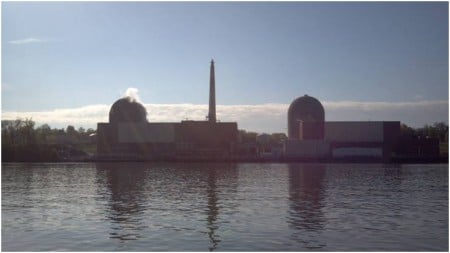Your Chance to tell the NRC to Close Indian Point

View more images on our Flickr site
You have until Saturday, Sept. 15 to make a statement for the Nuclear Regulatory Commission to consider during the pivotal hearings that will determine the fate of the Indian Point nuclear reactors. Please take this opportunity to tell the NRC to end the risk and Close Indian Point.
Riverkeeper will be your voice in the hearings, beginning October 15. Along with New York State and Clearwater, we are raising an unprecedented number of contentions to support our argument that Indian Point should close when the reactors’ current 40-year licenses expire. Entergy is asking for a 20-year extension.
The Indian Point nuclear plant is an ongoing ecological disaster and a looming risk to millions of us living in its shadow. In October, Riverkeeper will begin presenting our case opposing the relicensing of this aging, dangerous facility by highlighting Indian Point’s degraded, corroding plant systems; radioactive water leaks into the Hudson; impacts to endangered species; and, after an important June 2012 federal court victory, onsite storage of 1,500 tons of radioactive waste.
The NRC provides scant opportunities for the public to comment meaningfully on this critically important decision. Don’t miss this chance to show the NRC that the public wants this plant closed. Use your own words, or draw from information in the “Top 5 Reasons to Close Indian Point” below, and at the Close Indian Point section of riverkeeper.org.
Make your voice heard! Email your statement to both [email protected] and [email protected] by September 15.
Top 5 Reasons to Close Indian Point
5. More than 1,500 tons of radioactive waste stored in unfortified containers on the banks of the Hudson River at Indian Point. If the two nuclear reactors operate for another 20 years, Entergy would add another 1,000 tons of nuclear waste to containers New York State has described as “vulnerable to attack.” What’s more, carcinogenic radioisotopes from the plants have been leaking into the Hudson River since at least the early 1990s.
4. More than 1 billion dead fish and other organisms, killed by Indian Point’s cooling water intakes every year. Indian Point uses more than 2.5 billion gallons of water per day, sucking river life in with the water. Clean water laws require the use of the best available technology to reduce the environmental damage, but Indian Point’s owners have refused – for decades – to upgrade to modern technology. The slaughter helps explain why 10 of 13 signature Hudson River species are in decline.
3. An “unworkable” evacuation plan. After extensive study, James Lee Witt, the former head of the Federal Emergency Management Agency, flatly declared Indian Point’s evacuation plans “unworkable.” What’s more, the evacuation plans cover just a 10-mile radius around the plant, when fallout could easily spread 50 miles or more.
2. More than 20 million Americans at risk. A disaster here on the scale of the meltdown at Japan’s Fukushima Daiichi plant would endanger millions in and around New York City and the Hudson Valley. The economy of the country, and indeed the world, could be shaken by such a catastrophe.
1. We don’t need Indian Point’s power. A 2011 study commissioned by Riverkeeper and NRDC found that without Indian Point, the region would have a surplus of power through 2020, and could replace Indian Point many times over with investments in renewable energy, efficiency and transmission. The cost would be as little as $1-$5 per month for the typical homeowner.

